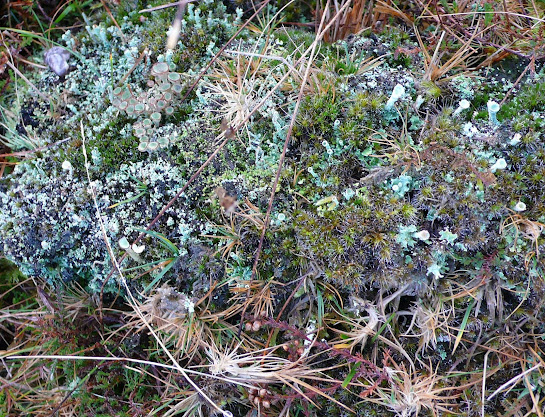As we approach mid-winter conditions remain unusually mild and the colours of autumn persist. Walking along the ridge behind my house and studio the last of the low sun enriches the colours at my feet. Heather shows the fresh green of unseasonable new growth, and while the withered sedges tremble in a stiff breeze the turgid lichens and mosses thrive knee deep on the waterlogged heath.
No matter what time of year one choses to walk over this coastal moorland the colours of the yarn used in the manufacture of Harris Tweed are always present. This year has unsurprisingly seen a slowing down in the cottage industry manufacture. There have been exceptions to this where enterprising weavers have adapted to online sales with stunning new tweeds. The range of colours now produced by the Harris Tweed Company is extra ordinary and it is the remnants from those bobbins that allows me to play on my own Harris Table Loom. The loom being small only allows me to weave about eight meter of cloth at any one time, but within those meters there are endless possibilities. Working a hand loom is very different to the foot peddled loom in that it is a much slower process. The lack of speed is fully compensated by the possibilities to change colours and style of weave at will. A friend informed me recently that she had timed herself on her old narrow loom at a meter of cloth in seven minutes. I would be lucky to produce one inch in the same time. One must also never forget the time it takes for warping out, transferring it onto the loom and then threading the headless before winding onto the beam. The colours chosen within the warp will also dictate what the overall look of the cloth will be. I this case I chose a repeated banding of lichen green with a contrasting deep blue green, which was enlivened with white and red. If woven with a weft of the same width this would produce a checker pattern or tartan. I try to choose colours as randomly as possible, however there is always a tendency to select contrasting colours in order to achieve a dramatic result. The cloth is made throughout with doubled yarn which again adds more scope for colour mixing and I have up to three different shuttles operating at any one time. So this give me six different colours and seven combination even before deciding on the weave. The resulting freestyle of colours and weave gives a totally unique constantly changing. The next stage will be deciding how to use the cloth, but that is for another time. For now I’m simply enjoying to result.
































